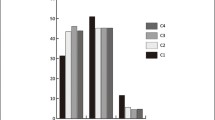Abstract
Objectives
To explore the associations of B-type natriuretic peptide (BNP) with physical frailty status as well as each domain of frailty in a general elderly population.
Design
Cross-sectional analysis of prospective cohort study.
Setting
All of 31 communities in Jiang’an township.
Participants
Overall 1338 participants (aged 70–89 years, mean 77.42±4.08 years) without a history of cardiovascular diseases in the third-wave of the aging arm of the Rugao Longevity and Aging Study (RuLAS).
Measurements
Frailty was defined as the presence of ≥3 domains among five modified Fried’s criteria (unintentional weight loss, low physical activity level, weakness (low grip strength), exhaustion, and slowness (slow gait speed)) and pre-frailty as the presence of 1–2 domains.
Results
The prevalence of frailty and pre-frailty was 10.4% and 53.3%, respectively, in this elderly population. Elevated BNP (≥100 pg/mL) was significantly associated with pre-frailty (OR: 1.61, 95% CI: 1.13-2.29) and frailty (OR: 2.63, 95% CI: 1.61-4.32) after adjustment for covariates. In addition, elevated BNP was associated with low grip strength (OR: 2.00, 95% CI: 1.41-2.82) and low gait speed (OR: 1.62, 95% CI: 1.15-2.28) after adjustment for multiple covariates. Log BNP was inversely associated with grip strength (r= -0.265, p<0.001) and gait speed (r= -0.189, p<0.001).
Conclusion
Elevated plasma BNP was associated with increased risks of frailty, pre-frailty, and low levels of grip strength and gait speed in the elderly community people.


Similar content being viewed by others
References
Clegg A, Young J, Iliffe S et al. Frailty in elderly people. Lancet 2013;381: 752–62.
Blodgett JM, Theou O, Howlett SE et al. A frailty index based on laboratory deficits in community-dwelling men predicted their risk of adverse health outcomes. Age and Ageing 2016;45: 463–8.
Song XW, Mitnitski A Rockwood K. Prevalence and 10-Year Outcomes of Frailty in Older Adults in Relation to Deficit Accumulation. Journal of the American Geriatrics Society 2010;58: 681–7.
Fried LP, Tangen CM, Walston J et al. Frailty in older adults: Evidence for a phenotype. Journals of Gerontology Series a-Biological Sciences and Medical Sciences 2001;56: M146–M56.
Leng SX, Cappola AR, Andersen RE et al. Serum levels of insulin-like growth factor-I (IGF-I) and dehydroepiandrosterone sulfate (DHEA-S), and their relationships with serum interleukin-6, in the geriatric syndrome of frailty. Aging Clinical and Experimental Research 2004;16: 153–7.
Soysal P, Stubbs B, Lucato P et al. Inflammation and frailty in the elderly: A systematic review and meta-analysis. Ageing Research Reviews 2016;31: 1–8.
Barzilay JI, Blaum C, Moore T et al. Insulin resistance and inflammation as precursors of frailty - The cardiovascular health study. Archives of Internal Medicine 2007;167: 635–41.
Cawthon PM, Ensrud KE, Laughlin GA et al. Sex Hormones and Frailty in Older Men: The Osteoporotic Fractures in Men (MrOS) Study. Journal of Clinical Endocrinology & Metabolism 2009;94: 3806–15.
Oremus M, McKelvie R, Don-Wauchope A et al. A systematic review of BNP and NT-proBNP in the management of heart failure: overview and methods. Heart Failure Reviews 2014;19: 413–9.
Ponikowski P, Voors AA, Anker SD et al. 2016 ESC Guidelines for the diagnosis and treatment of acute and chronic heart failure: The Task Force for the diagnosis and treatment of acute and chronic heart failure of the European Society of Cardiology (ESC). Developed with the special contribution of the Heart Failure Association (HFA) of the ESC. European Journal of Heart Failure 2016;18: 891–975.
Vaes B, de Ruijter W, Degryse J et al. Clinical Relevance of a Raised Plasma N-Terminal Pro-Brain Natriuretic Peptide Level in a Population-Based Cohort of Nonagenarians. Journal of the American Geriatrics Society 2009;57: 823–9.
van Peet PG, de Craen AJM, Gussekloo J et al. Plasma NT-proBNP as predictor of change in functional status, cardiovascular morbidity and mortality in the oldest old: the Leiden 85-plus study. Age 2014;36: 1541–54.
Ueda R, Yokouchi M, Suzuki T et al. Prognostic value of high plasma brain natriuretic peptide concentration’s in very elderly persons. American Journal of Medicine 2003;114: 266–70.
Yamashita T, Kohara K, Tabara Y et al. Muscle Mass, Visceral Fat, and Plasma Levels of B-Type Natriuretic Peptide in Healthy Individuals (from the J-SHIPP Study). American Journal of Cardiology 2014;114: 635–40.
Ohara M, Kohara K, Tabara Y et al. Sarcopenic obesity and arterial stiffness, pressure wave reflection and central pulse pressure: The J-SHIPP study. International Journal of Cardiology 2014;174: 214–7.
Liu ZY, Wang Y, Zhang YC et al. Cohort Profile: The Rugao Longevity and Ageing Study (RuLAS). International Journal of Epidemiology 2016;45: 1064–73.
Martin-Ruiz C, Jagger C, Kingston A et al. Assessment of a large panel of candidate biomarkers of ageing in the Newcastle 85+ study. Mechanisms of Ageing and Development 2011;132: 496–502.
Maisel AS, Krishnaswamy P, Nowak RM et al. Rapid measurement of B-type natriuretic peptide in the emergency diagnosis of heart failure. New England Journal of Medicine 2002;347: 161–7.
Ikeda M, Honda H, Takahashi K et al. N-Terminal Pro-B-Type Natriuretic Peptide as a Biomarker for Loss of Muscle Mass in Prevalent Hemodialysis Patients. Plos One 2016;11
Nishiguchi S, Nozaki Y, Yamaji M et al. Plasma brain natriuretic peptide level in older outpatients with heart failure is associated with physical frailty, especially with the slowness domain. Journal of Geriatric Cardiology 2016;13: 608–14.
Kuhn M, Volker K, Schwarz K et al. The natriuretic peptide/guanylyl cyclase-A system functions as a stress-responsive regulator of angiogenesis in mice. Journal of Clinical Investigation 2009;119: 2019–30.
Moro C Lafontan M. Natriuretic peptides and cGMP signaling control of energy homeostasis. American Journal of Physiology-Heart and Circulatory Physiology 2013;304: H358–H68.
Hamasaki H. The Effects of Exercise on Natriuretic Peptides in Individuals without Heart Failure. Sports 2016;4: 32.
Author information
Authors and Affiliations
Corresponding authors
Rights and permissions
About this article
Cite this article
Yao, S., Guo, J., Shi, G. et al. Association of BNP with Frailty in Elderly Population: Rugao Longevity and Ageing Study. J Nutr Health Aging 23, 73–78 (2019). https://doi.org/10.1007/s12603-018-1112-7
Received:
Accepted:
Published:
Issue Date:
DOI: https://doi.org/10.1007/s12603-018-1112-7




